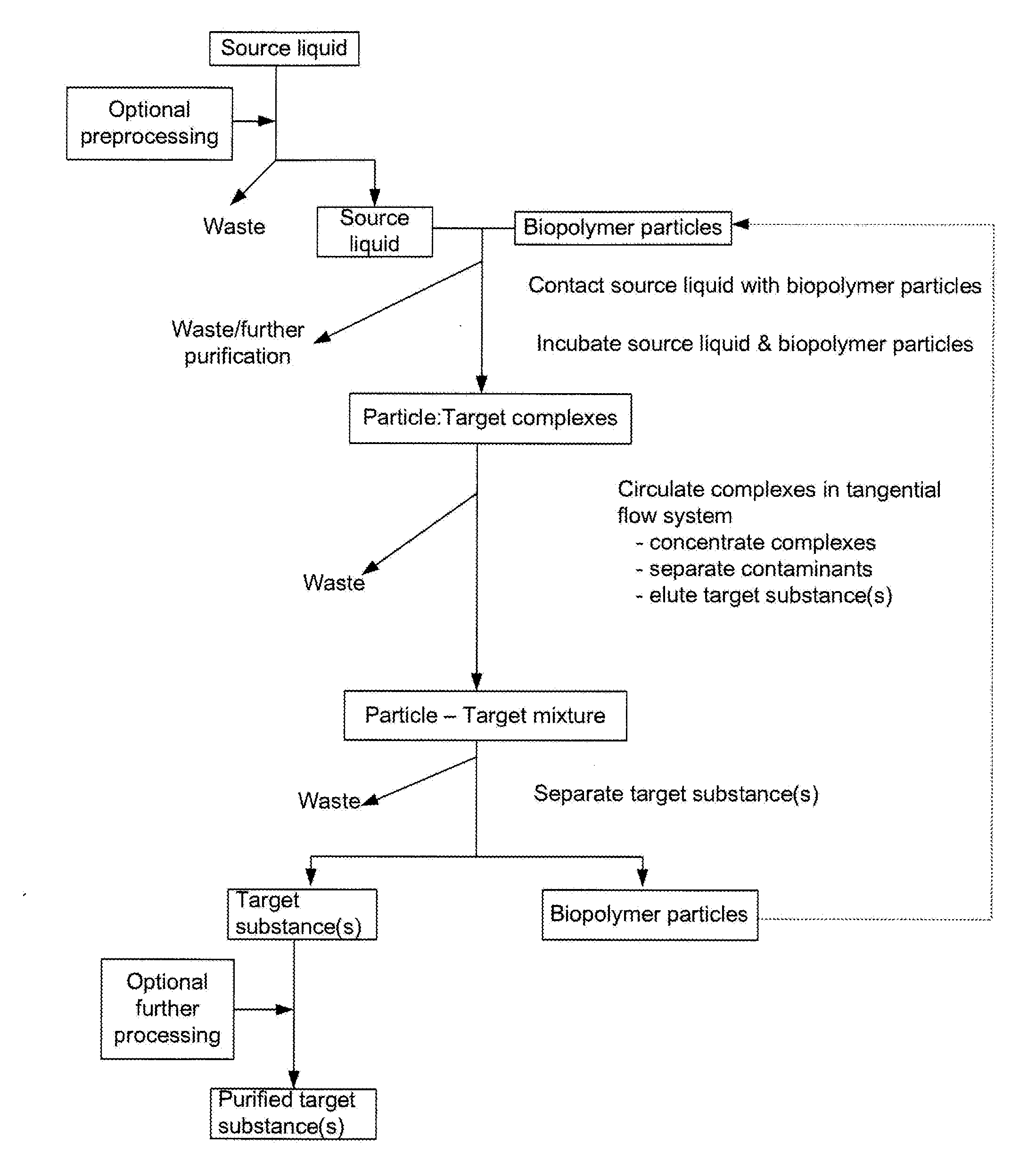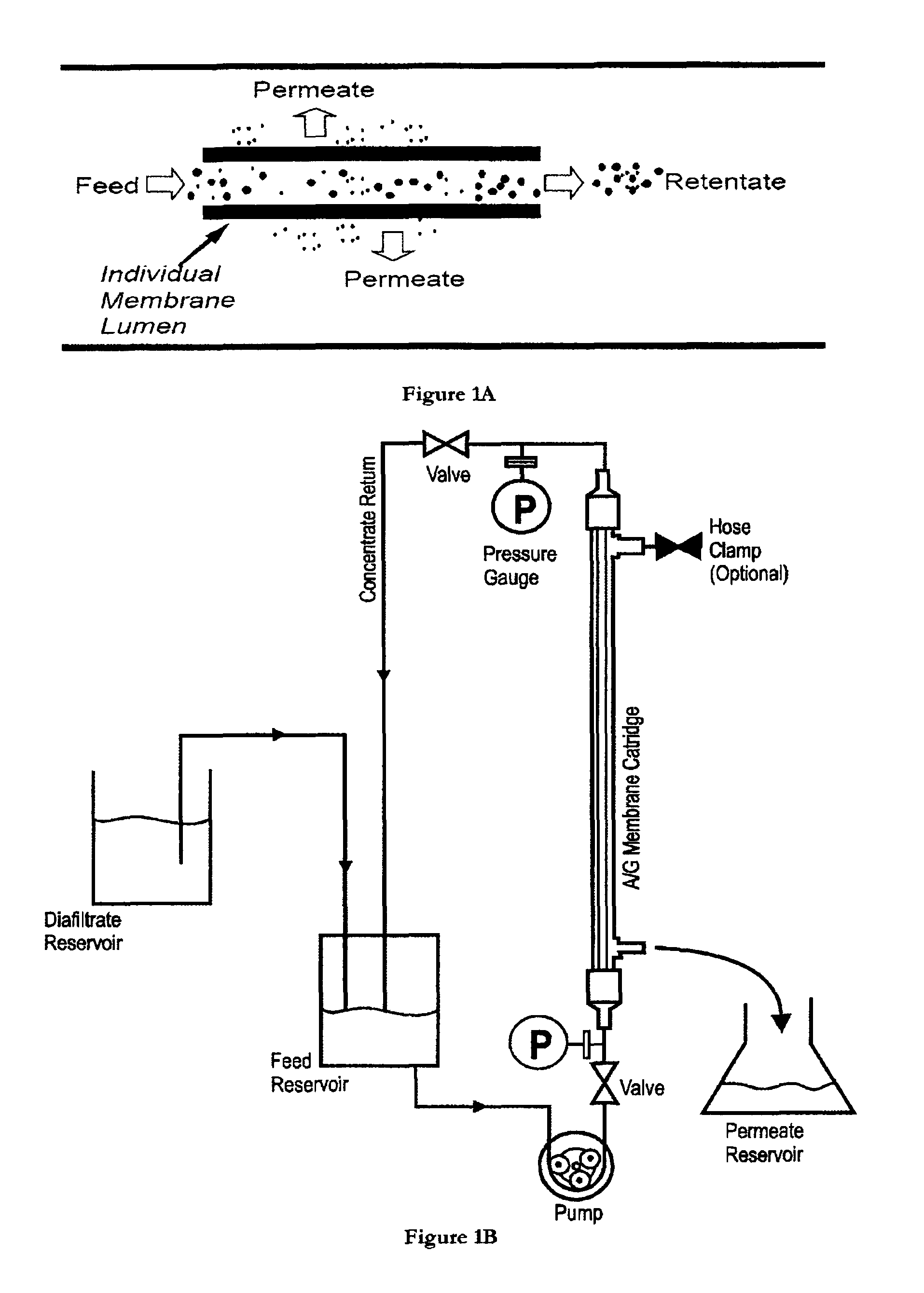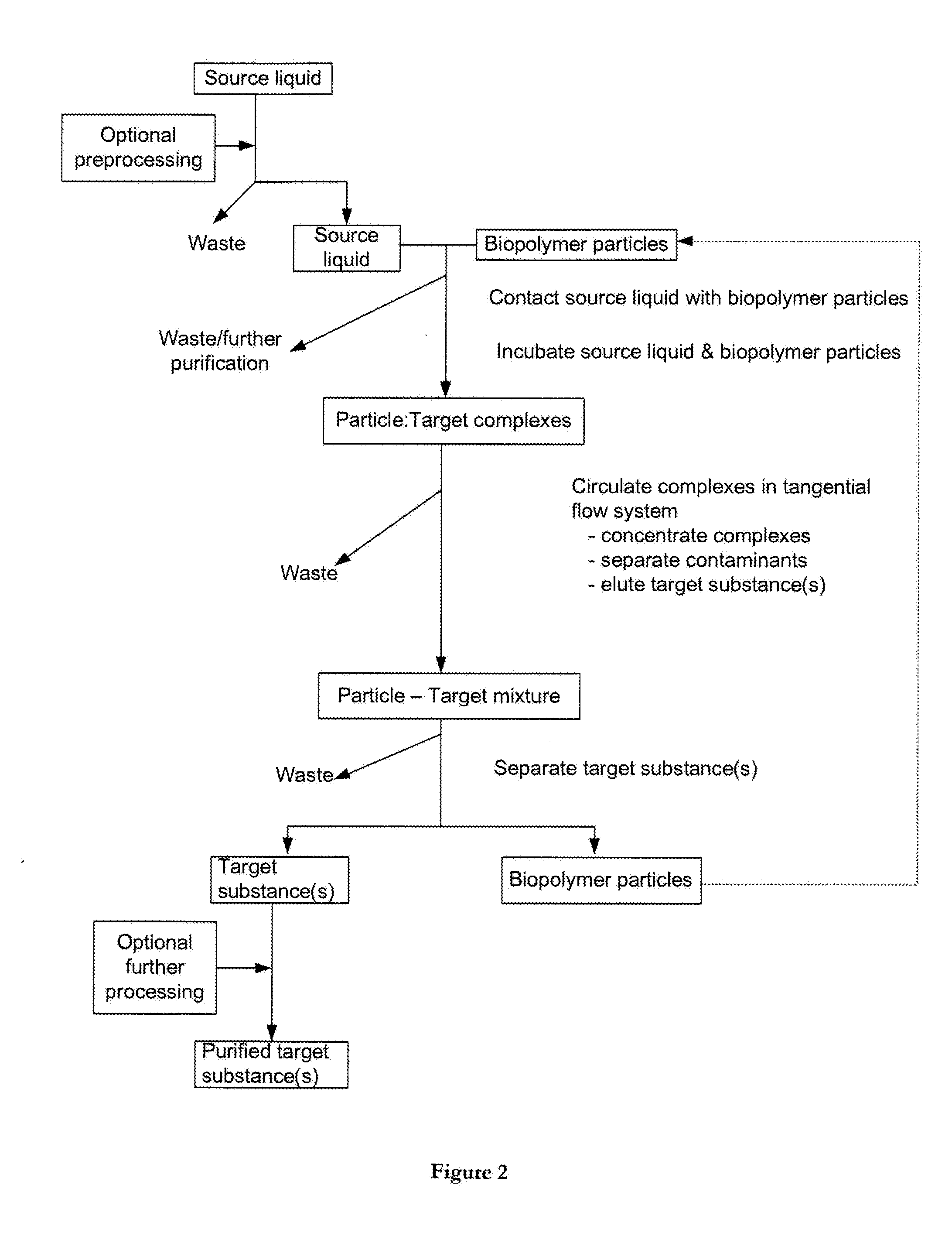Compositions for separation methods
a separation method and composition technology, applied in the field of separation and conversion technologies, can solve the problems of large expenditure on developing methods and technologies, irregular flow channels, and potential contamination
- Summary
- Abstract
- Description
- Claims
- Application Information
AI Technical Summary
Benefits of technology
Problems solved by technology
Method used
Image
Examples
example 1
Purification of IgG by Tangential-Flow Filtration
[0353]This example describes the use of polymer particles presenting an antibody-binding polypeptide domain in conjunction with various commercially-available tangential-flow membranes to purify IgG immunoglobulins.
Materials and Methods
[0354]All filtrations were conducted with the Sartorius Crossflow Slice 200 system. The following membranes were used: 0.1 μm Polyethersulfone, 0.2 μm Hydrosart, and 100 kDa Hydrosart, each from Sartorius.
[0355]P1, P2 and P3 are connected to a pressure transducer that records and send signals to the central controller from each point. P1, P2 and P3 are initially controlled by clamping of the tubing, and were left untouched throughout a run (Water flux and Diafiltration). Hence, trans-membrane pressure (TMP) was maintained by automated variation of pump feed rate.
Particle Preparation
[0356]ZZPhaC polymer particles were prepared in a bioreactor by culturing E. coli BL21 bacteria carrying...
example 2
Purification of Human IgG from a Mixed Solution
Introduction
[0369]This example describes the use of Z-domain-comprising polymer particles and TFF in the purification of human IgG from a mixed solution.
Materials and Methods
[0370]5 g polymer particles of the present invention comprising the Z-domain (as described in Example 1 above) were added to a solution of BSA and IgG (50 ml suspension in PBS pH 7.4). The IgG was allowed to bind to the polymer particles for a set period (30 min). After pre-incubation the polymer particle-IgG-BSA suspension was diafiltered on a TFF (0.1 um membrane) for several diafiltration volumes. The protein present in the collected permeate fractions was measured by absorbance at 280 nm (A280, 50 ml fractions), and the elution profile was plotted (to observe removal of BSA). IgG was eluted by adding citrate pH 3.0 when A280 reached zero, and IgG elution was followed in the permeate by A280 and analysis of the permeate fractions by SDS-PAGE (with silver stain).
R...
example 3
Use of GB1-Domain Polymer Particles and TFF to Purify Goat IgG from Goat Serum
Introduction
[0375]This example describes the preparation and use in TFF of polymer particles comprising the GB1 domain of protein G to purify goat IgG from a complex mixture.
Materials and Methods
Construction of Expression Plasmid
[0376]The plasmid pET-14b PhaC-(GB1)3 was constructed as follows. A DNA sequence (SEQ ID NO. 1 in the attached Sequence ID Listing) encoding an N-terminal linker (LEVLAVIDKRGGGGGSGGGSGGGSGGGG, [SEQ ID NO. 2]) and three GB1 binding domains from protein G (Streptococcus sp.), each separated by a linker region (SGGGSGGGSGGGGS, [SEQ ID NO. 3]) was synthesized by Genscript Inc. The introduced XhoI / BamHI sites were used to replace the MalE encoding DNA region in plasmid pET14b PhaC-MalE (Jahns and Rehm, 2009). This resulted in plasmid pET-14b PhaC-(GB1)3 with the DNA sequence depicted as SEQ ID NO. 4 in the attached Sequence ID Listing.
[0377]Introduction of plasmid pET-14b PhaC-(GB1)3 in...
PUM
| Property | Measurement | Unit |
|---|---|---|
| pH | aaaaa | aaaaa |
| pH | aaaaa | aaaaa |
| wet weight | aaaaa | aaaaa |
Abstract
Description
Claims
Application Information
 Login to View More
Login to View More - R&D
- Intellectual Property
- Life Sciences
- Materials
- Tech Scout
- Unparalleled Data Quality
- Higher Quality Content
- 60% Fewer Hallucinations
Browse by: Latest US Patents, China's latest patents, Technical Efficacy Thesaurus, Application Domain, Technology Topic, Popular Technical Reports.
© 2025 PatSnap. All rights reserved.Legal|Privacy policy|Modern Slavery Act Transparency Statement|Sitemap|About US| Contact US: help@patsnap.com



